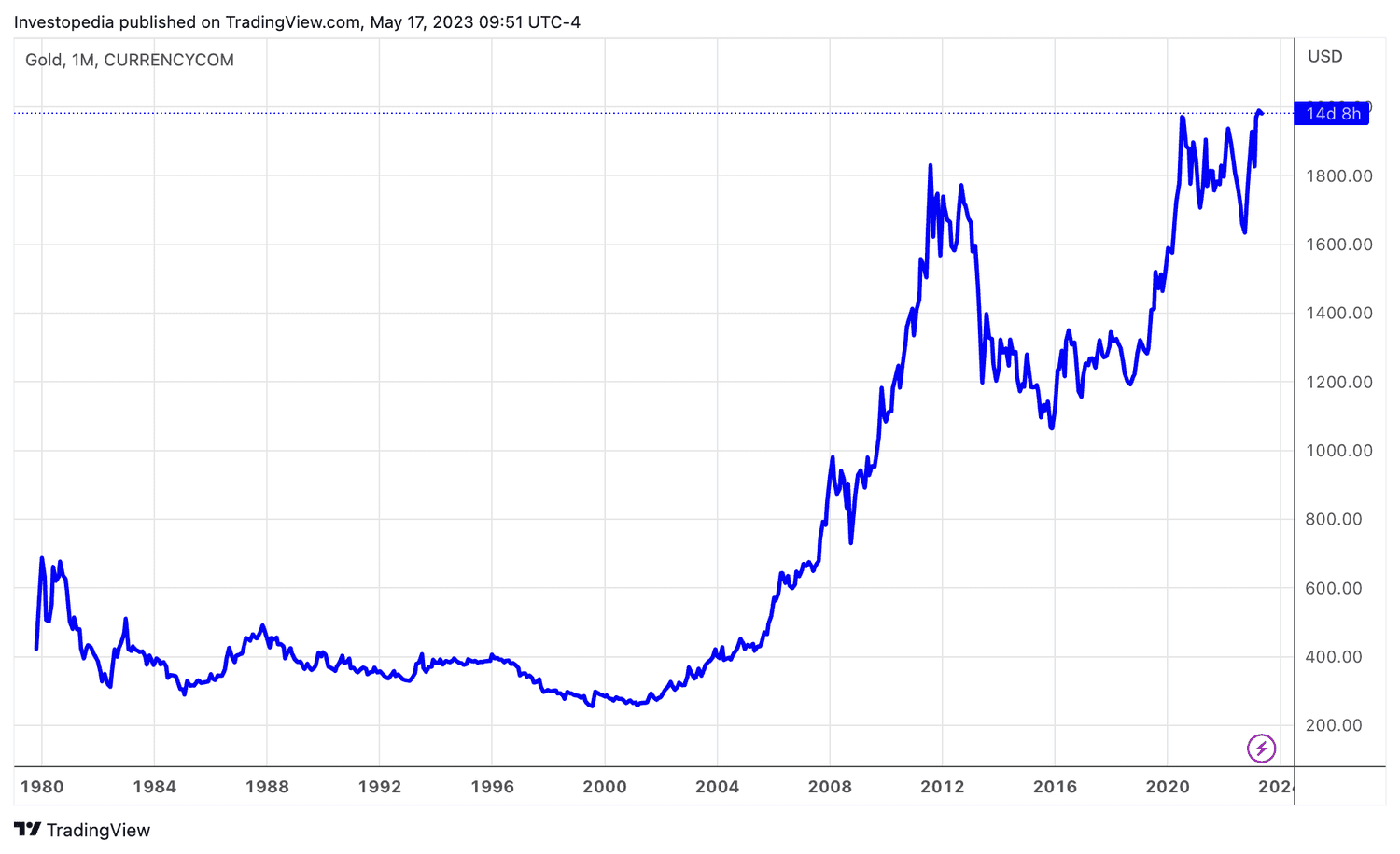Interested in the world of investments? Well, if you’re looking for a way to seize opportunities and make the most of price swings, you’ve come to the right place. In this article, we’re going to dive into the realm of short-term gold trading. As an experienced investor in gold, I’ll provide you with all the knowledge and insights you need to know about this intriguing investment strategy. So, get ready to explore the exciting world of short-term gold trading and discover how you can make the most of price swings in the market.
Understanding Short-Term Gold Trading
Gold trading refers to the buying and selling of gold in financial markets with the intention of making a profit. Short-term gold trading specifically focuses on taking advantage of price swings in the gold market over a relatively short period of time, usually ranging from a few minutes to a few weeks. This approach allows traders to capitalize on both upward and downward movements in the price of gold.
Why Trade Gold?
Gold has long been considered a safe-haven asset and a store of value. In times of economic uncertainty or volatility, investors often flock to gold as a way to protect their capital. This demand for gold can result in significant price movements, presenting opportunities for traders to profit from short-term fluctuations. Additionally, gold trading is highly liquid, meaning that traders can easily enter and exit positions, making it an attractive market for those looking for quick profits.
Factors Affecting Gold Prices
Various factors can impact the price of gold, and as a short-term trader, it’s important to understand these influences. Macroeconomic indicators such as inflation rates, interest rates, and geopolitical tensions can all have a significant impact on gold prices. Additionally, supply and demand dynamics, central bank policies, and changes in investor sentiment can contribute to price fluctuations. Staying informed and regularly monitoring these factors can help traders make more informed decisions.
Benefits of Short-Term Gold Trading
Short-term gold trading offers several advantages. Firstly, it allows for quick profit potential as traders can take advantage of rapid price movements. Moreover, short-term trading requires less capital compared to longer-term investments, making it accessible to a wider range of traders. This approach also allows traders to avoid overnight risk and can be less stressful compared to long-term investment strategies. However, it’s important to note that short-term trading also carries its own set of risks, and traders should always exercise caution and practice proper risk management.
Setting Up a Short-Term Trading Strategy
To succeed in short-term gold trading, it’s essential to have a well-defined trading strategy in place. Market analysis is a crucial component of any trading strategy. Traders should utilize both technical analysis and fundamental analysis to analyze the gold market and identify potential trading opportunities. Technical analysis tools such as candlestick charts, moving averages, the Relative Strength Index (RSI), Bollinger Bands, and Fibonacci retracements can provide valuable insights into price patterns, trends, and support/resistance levels.
Determining entry and exit points is another critical aspect of a short-term trading strategy. Traders can use various techniques such as price action analysis, chart patterns, and indicators to identify optimal entry points. Similarly, setting specific profit targets and using trailing stop-loss orders can help traders manage their risk and maximize potential gains. Traders should also develop risk management strategies to protect against potential losses, such as implementing proper position sizing and utilizing stop-loss orders.
Choosing a reliable and user-friendly trading platform is also essential for short-term gold trading. Look for platforms that offer real-time market data, advanced charting tools, and fast trade execution. Take into consideration factors such as fees, customer support, and security when selecting a trading platform to ensure a smooth and efficient trading experience.
Technical Analysis Tools for Short-Term Gold Trading
Technical analysis is a widely used approach in short-term trading, as it allows traders to analyze historical price data and identify patterns and trends. Several technical analysis tools are commonly employed in short-term gold trading:
Candlestick Charts
Candlestick charts provide a visual representation of price movements over a given time period. Traders can interpret the patterns formed by candlesticks to identify potential trend reversals or continuation patterns.
Moving Averages
Moving averages smooth out price fluctuations and provide traders with average prices over a specified period. They can help identify overall trends and support/resistance levels.
Relative Strength Index (RSI)
The RSI is a momentum oscillator that measures the speed and change of price movements. It provides traders with insights into overbought and oversold conditions, indicating potential trend reversals.
Bollinger Bands
Bollinger Bands consist of a centerline and two standard deviation lines. They help traders identify periods of high or low volatility and potential price breakouts.
Fibonacci Retracements
Fibonacci retracements are based on mathematical ratios that can help traders identify potential support and resistance levels. Traders use these levels to determine possible entry and exit points.
Identifying Short-Term Trading Opportunities
Reading gold price patterns is essential for identifying short-term trading opportunities. Traders should learn to recognize common chart patterns such as head and shoulders, triangles, and double tops/bottoms. These patterns can provide valuable insights into potential price movements and trend reversals.
Support and resistance levels are also critical for short-term traders. Support levels act as a floor, preventing prices from falling further, while resistance levels act as a ceiling, preventing prices from rising further. Identifying these levels can help traders make more accurate predictions about future price movements.
Monitoring market news and events is equally important for short-term trading. Economic data releases, geopolitical developments, and central bank announcements can all significantly impact gold prices. By staying informed about these factors, traders can be better prepared to react to sudden market movements.
Using technical indicators such as moving averages, RSI, and Bollinger Bands can assist traders in spotting trends and confirming potential trading opportunities. Traders should look for convergence or divergence between different indicators to increase the probability of successful trades.
Common Short-Term Trading Strategies for Gold
There are several popular short-term trading strategies that traders can employ in the gold market:
Scalping
Scalping involves making numerous quick trades in a short period to take advantage of small price movements. Traders aim to make small profits on each trade, relying on high trading volume and tight bid-ask spreads.
Range Trading
Range trading involves identifying well-defined support and resistance levels and trading within the range bounded by these levels. Traders buy near support and sell near resistance, making profits as the price oscillates within the range.
Breakout Trading
Breakout trading involves identifying periods of consolidation or tight trading ranges and initiating trades when prices break out of these ranges. Traders aim to capture significant price moves following a breakout.
Swing Trading
Swing trading involves capitalizing on short-term price swings within larger trends. Traders hold positions for several days or weeks, aiming to profit from both upward and downward price movements.
Short-Term Trading Psychology and Discipline
Successful short-term trading requires discipline and control over emotions. Emotions such as fear and greed can adversely affect trading decisions. Traders must develop a mindset focused on following a trading plan without being swayed by short-term market fluctuations.
Sticking to a trading plan is crucial for maintaining consistency and avoiding impulsive decisions. A trading plan outlines entry and exit strategies, risk management techniques, and specific profit targets. By following a well-defined plan, traders can reduce the impact of emotional biases and improve their overall trading performance.
Keeping a trading journal is an effective way to monitor progress, identify strengths and weaknesses, and learn from past trades. By recording details of each trade, including the reasons for entering and exiting a position, traders can gain valuable insights into their trading patterns and improve decision-making.
Practical Tips for Short-Term Gold Traders
Implementing stop-loss orders is essential for managing risk in short-term gold trading. Stop-loss orders automatically close out a trade if the price reaches a predetermined level, protecting traders from significant losses. It’s important to place stop-loss orders at appropriate levels to minimize risk while still allowing for market fluctuations.
Proper position sizing is crucial to manage risk and optimize potential returns. Traders should determine the appropriate position size based on their risk tolerance and the size of their trading account. Avoid risking a significant portion of the trading capital on a single trade, as it can lead to substantial losses.
Diversifying your portfolio is a risk management strategy that involves spreading investments across multiple assets. By diversifying, traders can reduce the impact of any single trade or asset on their overall portfolio performance. Consider diversifying not only within the gold market but also across different asset classes.
Managing costs and commissions is important in short-term trading, as frequent trading can result in a higher number of transaction fees. Traders should evaluate the trading costs associated with different platforms and brokers and choose the most cost-effective option.
Monitoring and Exiting Short-Term Trades
Setting profit targets is crucial for short-term traders to lock in gains and avoid holding positions for too long. Traders should determine their profit target based on their risk tolerance and expected price movements. Once the profit target is reached, it’s important to exit the trade promptly to secure profits.
Trailing stop-loss orders can be used to protect profits and minimize risk. A trailing stop-loss order automatically adjusts the stop-loss level as the price moves in favor of the trade. This allows traders to capture profits while still allowing for potential upside.
Monitoring gold market news is essential for identifying potential changes in market sentiment. Unexpected events or announcements can influence gold prices and may require traders to exit their positions if the market dynamics change significantly.
Recognizing signs of trend reversal is crucial for short-term traders. Reversal patterns such as double tops/bottoms or trendline breaks provide early indications that the market sentiment might be shifting. By exiting trades when these patterns emerge, traders can avoid potential losses.
Learning from Past Trades
Analyzing trade performance is essential for short-term gold traders to identify strengths and weaknesses in their trading strategies. By reviewing past trades, traders can assess the effectiveness of their entries and exits, risk management techniques, and overall profitability. It’s important to learn from past mistakes and make adjustments to improve future trading performance.
Evaluating trading strategies is another critical aspect of learning from past trades. Traders should assess the performance of different strategies and indicators, identify which ones work best in different market conditions, and adapt their approach accordingly.
Making adjustments to improve results is an ongoing process for short-term traders. It’s essential to continuously fine-tune trading strategies based on market conditions, new information, and lessons learned from past trades. Flexibility and adaptability are key attributes for successful short-term gold trading.
Risk Management and Risk Mitigation
Understanding leverage and margin is crucial for managing risk in short-term gold trading. Leverage allows traders to control larger positions with a smaller amount of capital, amplifying both profits and losses. It’s important to use leverage responsibly and ensure that the risk of any trade is within acceptable limits.
Using risk-reward ratios is a risk management technique that helps traders assess the potential return versus the potential loss of a trade. By analyzing the risk-reward ratio before entering a trade, traders can make more informed decisions and ensure that the potential reward justifies the risk taken.
Applying proper money management techniques is vital for mitigating risk. Traders should set a maximum acceptable level of risk for each trade and allocate their trading capital accordingly. By managing risk effectively, traders can protect themselves from significant losses and preserve their trading capital.
In conclusion, short-term gold trading can be a lucrative investment strategy for those willing to put in the time and effort to understand the market dynamics and develop a robust trading strategy. By staying informed, utilizing technical analysis tools, and practicing proper risk management, traders can seize opportunities in price swings and potentially achieve consistent profits in the gold market.



